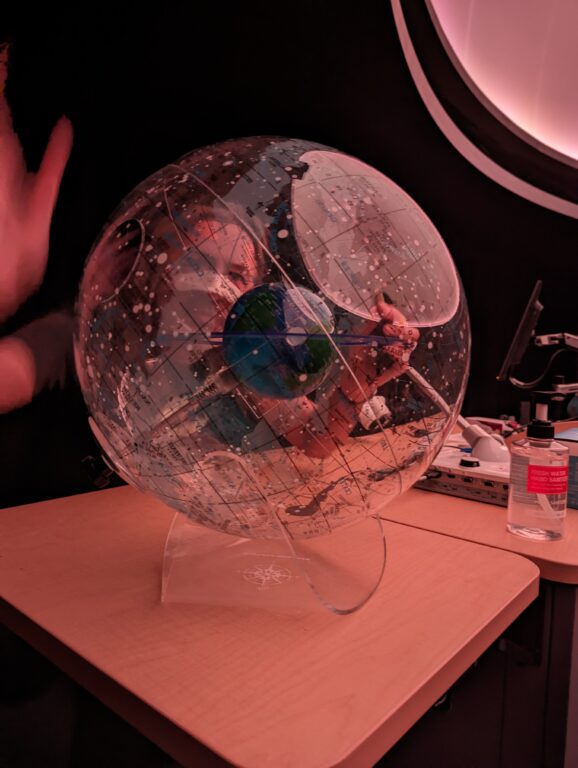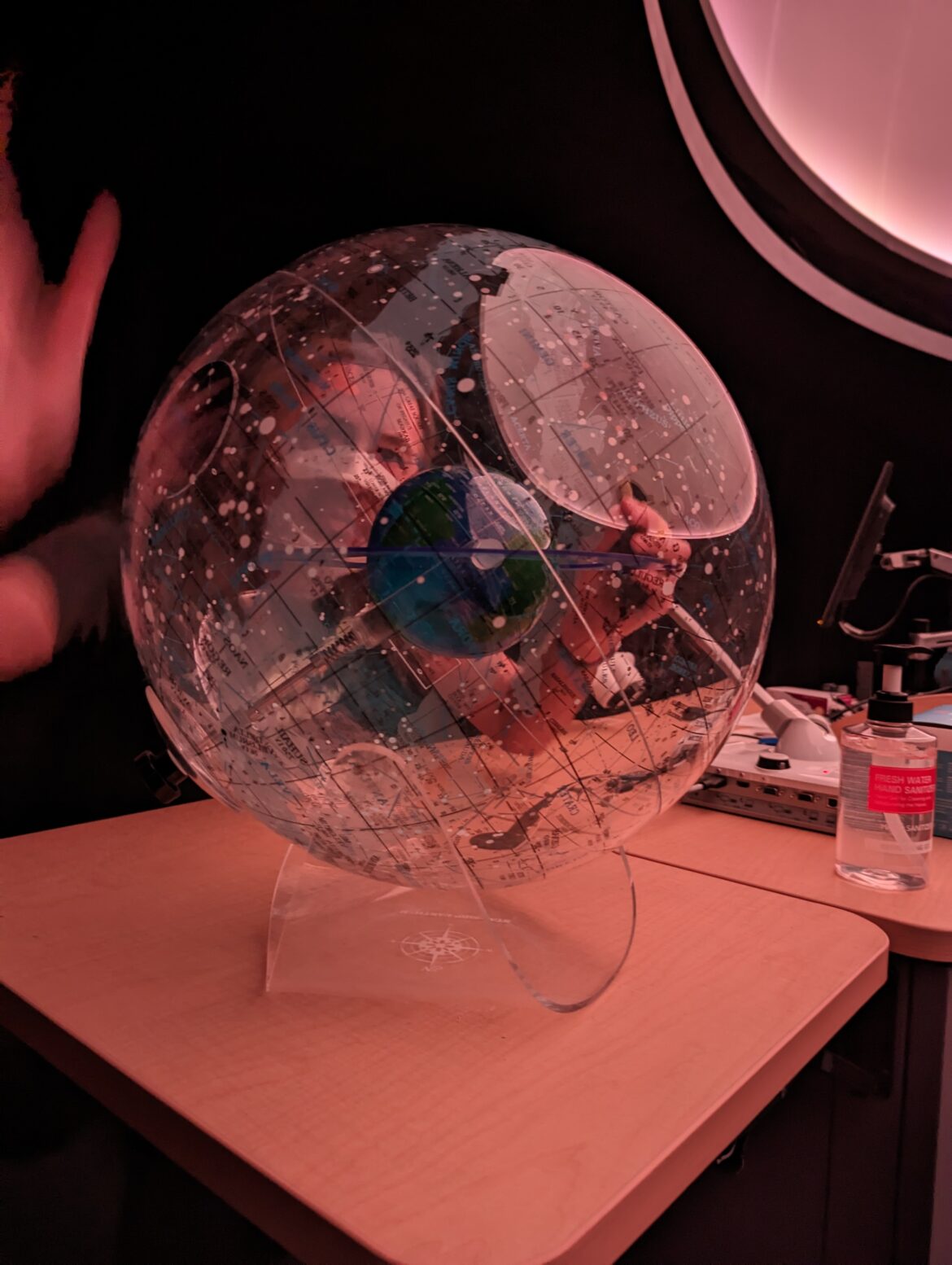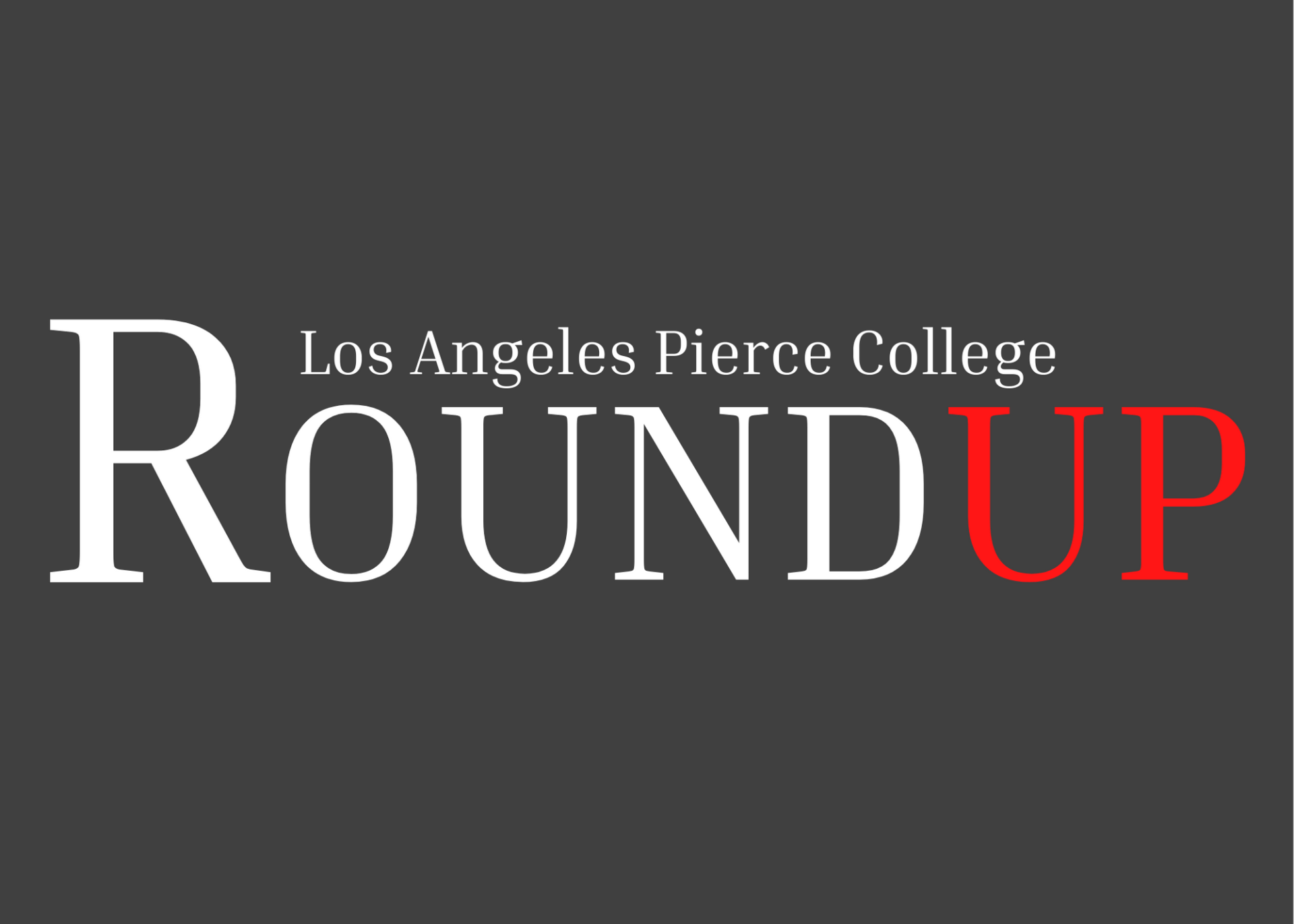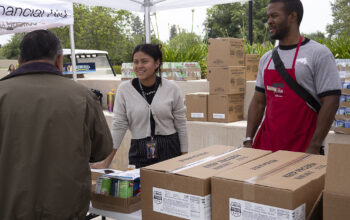
If you want to watch a show at a planetarium, you don’t have to drive all the way to the Griffith Observatory. Pierce College has a big blue dome that would even impress the late James Dean.
The Planetarium Show took earthlings of various ages on a two-hour educational trip through the cosmos on Friday at the Center for Sciences, where attendees learned facts and history about space.
The free event was hosted by astronomy professor and Physics Department Chair Dale Fields, and it was open to not students and staff, as well as the general public.
Fields projected space objects starting from homebase Earth and ending to as far as the most sophisticated telescopes can see. The show gave the illusion of zooming in various directions and distances—from the moon to the cosmic microwave background (CMB), the farthest place in the universe that astronomers are able to see.
Fields talked about the eight planets in our solar system, but that only scratched the surface of the presentation.
“This is the time to be alive,” Fields said. “What I hope that people get from this show is that the universe is grander than they know and a lot easier to understand than they imagine.”
People who grew up learning about space in the 1990s may have only known about our own solar system, or they may have read books that said that Pluto is a planet.
“When I was a kid, the only planets that we knew of were the ones in our solar system,” Fields said. “Now we have proof that there are thousands upon thousands of planets out there in the universe.”
Fields connected astronomy to history by explaining how ancient civilizations used stars as a form of entertainment.
As figures such as Orion, Ursa Major, Scorpius and other constellations filled the dome, Fields said that we found out a lot about our ancestors that looked up at the night sky through the 88 official constellations.
“The night sky is a bit of a Rorschach test,” said Fields, as he reminded attendees that people didn’t always have TV to entertain them.
Among the many light-years the show took viewers on, it gave people the opportunity to see the other side of the moon and to travel through asteroid belts. Fields would sporadically clarify misconceptions about space that pop culture gets wrong.
The show concluded with Fields talking about the frontier of astronomy–how astronomers may one day prove current theories about the universe.
Planetarium Show attendee Sandra Martinez brought her 6-year-old daughter to the show, as she finds fascination in planets.
“I enjoyed seeing her happy,” Martinez said. “We drove all the way from LA with traffic and were able to catch a good hour of the show, so we are happy with that.”
Board of Director with the Los Angeles Astronomical Society David Yakerson compared the show to the planetarium shows that used to be presented at Griffith Observatory.
“I thought it was fantastic,” Yakerson said. “We should do this over at our Griffith Observatory as well. We’re working towards that right now because the shows have gotten away from what they should be doing.”
The next LAPC Planetarium show is on April 18.




